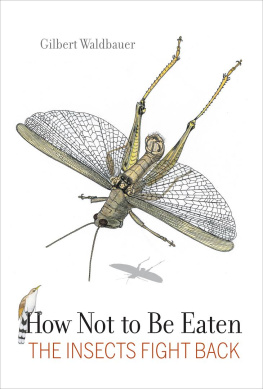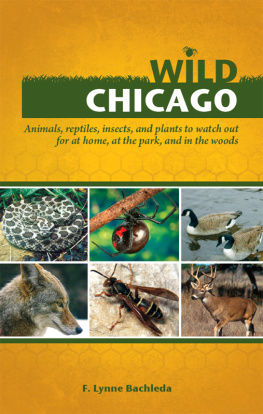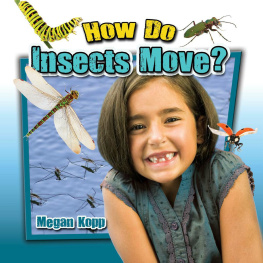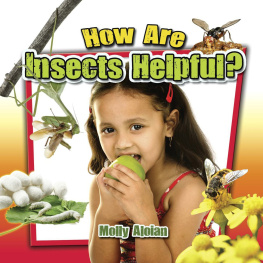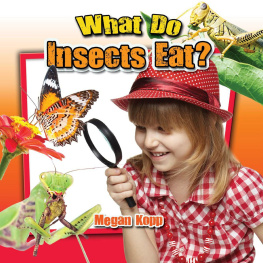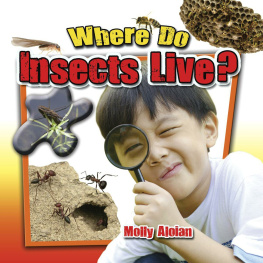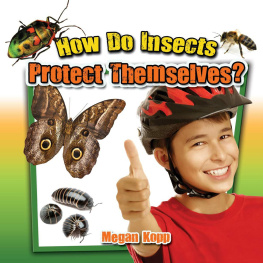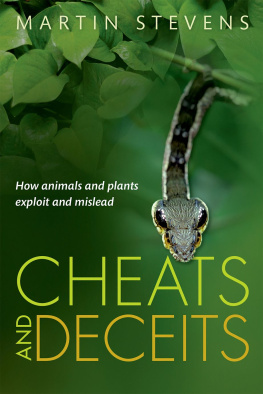ACKNOWLEDGMENTS
I am greatly indebted to the many friends and colleagues whose support and expertise improved this book, making it much better than it would have been without their help. Outstanding among them are my wife, Phyllis Cooper Waldbauer, and my dear friend Nancy Clemente. Phyllis read several drafts of the manuscript and made many constructive suggestions. Nancy, who masterfully edited the five of my books published by Harvard University Press and who is now retired, volunteered to edit this manuscript pro bono. Many others freely shared their scientific expertise: May Berenbaum, the late John Bouseman, Lincoln Brower, Sydney Cameron, Larry Hanks, Steven Malcolm, James Nardi, David Seigler, and James Sternburg. With great patience, Karen Trame and Elizabeth Berry typed the manuscript. My agent, Edward Knappman of New England Publishing Associates, was, as always, very helpful.
Text: 10.75/15 Janson MT Pro
Display: Janson MT Pro
Compositor: BookComp, Inc.
Indexer: Thrse Shere
Printer and binder: Maple-Vail Book Manufacturing Group
ONE
Insects in the Web of Life
Insects constitute by far the largest amount of animal food available to flesh eaters both on dry land and in freshwater. The one quarter of the earth that is not covered by the oceans and seas is inhabited by an immense and not yet completely censused population of insects. The 900,000 currently known insect species (at least three million are yet to be discovered and named, according to reasonable estimates [Stephen Marshall]) constitute about 75 percent of the currently known 1,200,000 animal species on land, in freshwater, and in the oceans. The Canadian entomologist Brian Hocking made the daring but educated guess that the world population of insects is about one quintillion (1 followed by eighteen zeroes) individuals. Even if he overestimated by trillions, that would still be a stupendous population.
Although insects are small, they are generally so numerous in most terrestrial and freshwater ecosystems that, on a per-acre basis, they not only outnumber but also outweigh all the other animalsincluding deer and moosecombined. On the face of it, this is hard to believe. But keep in mind that a single acre of land may be home to many millions of insects of hundreds or even thousands of species. By contrast, the home territory of one small bird is likely to encompass as much as an acre, and that of a large mammal, such as a thousand-pound moose, several hundred or even thousand acres. Thus the biomass of an animal that weighs hundreds of pounds may be much less than one pound per acre. Also keep in mind that most people notice only a few of the many insects around them, perhaps a ladybird beetle or a large and beautiful butterfly, but more often the insects that sting, bite, or otherwise annoy them. Yet the other insects, by far the vast majority in almost any ecosystem, go unnoticed. Not only are they small, but many are difficult to see because they are camouflaged, and many are out of sight because they live in the roots, stems, or other parts of plants; as parasites within the bodies of insects and many other animals; or in the soil or other cracks and crevices of the environment.

Figure 1. A thousand-pound moose (representing all mammals, birds, and other vertebrates in its ecosystem) and a tiny beetle (representing all insects in the same ecosystem) drawn to a scale representing their biomass as pounds per acre.
Insects are, either directly or indirectly, the most plentiful source of flesh for animals that don't eat plants. But they are important to these predators not just because of their abundance. Plant-feeding insects, estimated to be about 450,000 species, and the insects and other animals that eat them are by far the most important link between green plants and animals that don't eat plants, a conduit through which predators receive the energy of the sun, which green plantsand only green plantscan capture and make available to animals via photosynthesis, in the form of sugars. Insect-eating insects play another significant, although less important, role. By eating tiny organisms and incorporating their prey's nutrients in their own bodies, large insects become nutrient packages for large insectivores that cannot profitably pursue and eat tiny organisms themselves.
Data gathered by Eugene Odum and other ecologists show just how important a part of the food chain insects are in specific ecosystems. For example, in a field of herbaceous plants in North Carolina, the biomass of the plant-feeding insects alonenot including any predaceous, parasitic, or scavenging specieswas nine times greater than that of sparrows and mice, the larger and more conspicuous and by far the most numerous of the vertebrates in that field. On an East African plain, just two species of antsonly those two, among hundreds of other kinds of insectswere about equal in weight, per acre, to the combined weight of the large grazing animals, such as wildebeests, zebras, and antelopes. In these two habitats and in almost all others, insects are by far the most abundant of the prey animals in both numbers and biomass. As is to be expected, and as we will see in the , hundreds of thousands of different kinds of animals exploit this nutritious, protein-rich food: spiders, scorpions, insects, frogs, toads, lizards, birds, mammals.
The insects almost certainly have more different lifestyles, ways of surviving and making a living, than do any other group of animals. One species or another occupies everyor nearly everyecological niche. An ecological niche is not just a place; it includes all of the resources, food, nesting sites, hiding places, and so on, required by an organism. Except for aquatic species, insects that undergo gradual metamorphosis occupy essentially the same niche throughout their lives. Those with complete metamorphosis often occupy two very different niches in their larval and adult stages.
Dragonflies, grasshoppers, cockroaches, mantises, true bugs (order Hemiptera), and lice are some insects that gradually metamorphose. A newly hatched grasshoppera nymphlooks very much like its parents but lacks wings. As it grows, it molts several times, and its developing wings, which are external, can be seen gradually increasing in size until the hopper stops growing and molts for the last time to become an adult with flightworthy wings. Insects with gradual metamorphosis have only three life stages: the egg; the nymph, the growing stage; and the adult, the egg-laying reproductive stage. Nymphs look and behave much like adults, except in most aquatic species. For instance, adult dragonflies are aerial acrobats that pursue flying insects. But the nymphs are aquatic, don't look at all like the adults, and are fierce predators that eat aquatic insects and even small fish.
Beetles, fleas, flies, wasps, bees, moths, and butterflies are among the many insects that undergo a complete metamorphosis. The baby butterfly just hatched from the egg is a wormlike larva that does not at all resemble its parents. A biologist from another planet might think that the larva and the butterfly are two quite different kinds of animals, as dissimilar as birds and snakes. Complete metamorphosis proceeds in four life stages: the egg; the wingless larva, called a caterpillar in the case of butterflies and moths; the pupa, the transition stage in which the larva metamorphoses into the adult; and the winged reproductive stage. Larvae not only look different than their parents but also usually behave very differently. Caterpillars, for example, have chewing mouthparts, and most feed on plants, usually the leaves. The wingless pupae, with only a few exceptions, can squirm but cannot walk or crawl and are usually tucked away in a safe place, perhaps in the soil, under bark, or in a silken cocoon. The adult, a butterfly or moth for example, has large wings that developed internally in the pupa, as do its long, soda straw-like siphoning mouthparts, used for sucking nectar from blossoms.
Next page
